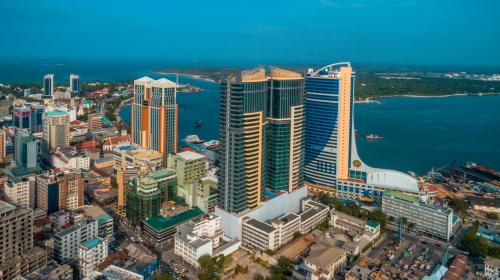News that India’s current account deficit widened to a record $15.8 billion for the July-September quarter has sparked debate. The capital investment that finances this deficit helps the country to grow. But India is certainly awash in foreign capital inflows, the trouble being that these foreign investors can be fickle. Previous emerging-market crises have made it clear that dependence on foreign finance can be dangerous. So what should India do?
Trying to cut the current account deficit itself is the wrong way to go. Talk of boosting exports is all well and good, and may eventually happen. But for now the operative fact is that Indians’ demand for goods exceeds their ability to produce them. Reducing the deficit beyond a certain point would require forcing Indians to forego some of the tangible benefits of development.
Instead, policy makers must focus on how that deficit is financed. The key is to create more ways to channel capital inflows into productive investments, which would help the country attain many of the potential benefits of foreign capital with less exposure to the risks of volatile short-term flows.
This involves a variety of policy measures to shift the composition of inflows toward longer-term uses. Inflows currently are heavily tilted toward equity markets, which are well-developed and well-regulated and offer foreign investors easy access. While this is not inherently bad—equity markets are an important way for companies to raise capital for growth-boosting investment—it does carry risks. Experience shows equity inflows tend to be flighty and can turn on a dime.
So now, policy makers should focus on opening new pathways, especially for foreign direct investment—capital to build factories or stores, for instance, or longer-term joint ventures with local firms. FDI is one of the more stable forms of inflows into emerging markets. FDI investors are almost by definition interested in staying for the long term.
Unfortunately, India has traditionally not been friendly to FDI. This kind of investment tends to involve a different kind of foreign investor—one who wants to bring technological and managerial expertise in addition to capital. Populist politicians in India have thus feared that entry by perhaps-superior foreign competitors could hurt domestic firms. That’s certainly one argument used against opening up the retail sector, for instance: A 2009 parliamentary committee thought that the presence of Wal-marts and Carrefours in India would drive mon-and-pop stores out of business. But it’s precisely these areas of investment that can not only keep capital in India longer, but help its market economy: Without more efficient supply chain managers, India’s retail markets help create food shortages.
As for portfolio inflows, India must do a better job welcoming foreign investors who see India as a country with long-term growth potential rather than just as an opportunity to make a quick buck. This requires the development of corporate bond markets, which would help absorb foreign capital inflows more effectively and channel them toward longer-term investments that the country badly needs, especially infrastructure projects.
Such reforms will require more than merely liberalization of those particular investment types. India must tackle other barriers that discourage all long-term investors, such as corruption and bureaucratic red tape. Research shows that countries with higher corruption and lower public transparency scores tend to get a greater proportion of their inflows in more volatile forms.
Meanwhile, policy makers must strongly resist any urge to impose capital controls to discourage short-term capital flows. As India continues to integrate into the global economy, the notion of trying to manage inflows through capital controls is likely to prove futile and perhaps even counterproductive. This approach would solve none of the long-term issues related to persistent capital inflows. Instead, it simply perpetuates opportunities for corruption and affords protection to politically well-connected firms. Worse, a track record of imposing capital controls scares off long-term investors who could contribute to India’s enormous needs for corporate finance.
Instead, policy makers should focus on those parts of the current-account deficit that do need to be cut. While the deficit is partly a result of high investment that boosts long-term growth, part of it also represents the fact that profligate government is dragging down the national savings rate, negating some of the thriftiness of households.
For the country’s domestic and external stability, it is vitally important to rein in the government budget deficit and put the public debt on a sharp downward trajectory. Switching from inefficient subsidies to direct cash transfers to households would help rein in government expenditures and make the social safety net more efficient. This is especially important as the benefits from foreign capital are inevitably going to be spread unevenly and there will be many losers in this process, particularly in sectors where many domestic firms are unable to cope with foreign competition. The lack of an efficient safety net could drain away public support for capital-account opening, despite its broader benefits.
Clearly, the challenge of managing capital flows and absorbing them effectively touches on a broad range of policies. Fortunately, all these reforms should be a lot easier now that the economy is growing strongly. A period of high growth and large inflows offers policy makers as good an opportunity as they may ever get to implement these important measures. India can’t afford for them not to do so.



Commentary
Op-edHow India Can Cope With Plenty
January 7, 2011